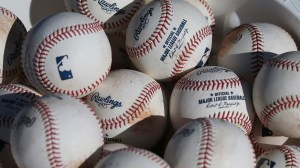ALTOONA, Pa. (WTAJ) — In this episode of Science with Shields, Christy Shields shows you how to use air pressure to not spill water.
What you need:
- Glass
- Plastic lid or coaster
- Water
- Bowl or sink
Instructions:
Fill your glass a quarter of the way up with water. Next, over your bowl or sink (incase this experiment fails!) push the plastic lid or coaster on the top of the glass and quickly turn it over. Move your hand away, the water should stay in the glass and not spill out! This may take a few times before you get the hang of it!
Science:
Air pushes on us at all times! From the top, bottom, and sides. At sea level, air pressure is 14.7 pounds per square inch! Our bodies are used to it so we don’t feel it surrounding us. We understand gravity, we can jump up, but gravity will bring us back down to earth. Well, how this works is that air is pushing up on the coaster with the force of 14.7 pounds per square inch! In our glass since we flipped it fast, there are fewer air molecules and less pressure above the water in the glass. That means more air is pushing up on the glass compared to pushing down keeping the plastic lid in place! This is why the water will not spill out of the glass.
Air pressure is used a lot in meteorology! We measure air pressure with a barometer and our unit of air pressure on a weather map is called a millibar. Average sea level air pressure is 1013 millibars. We use pressure in weather to tell if it is going to be a nice day or a rainy day. High pressure (above 1013 millibars) means we will have dry weather and sunshine. If it is below or the pressure is dropping, we know that some type of clouds or precipitation is on the way!
Shout out to Dr. Edward P. Zovinka, PhD from Saint Francis University. This experiment came from him and he wrote a book called, Real Chemistry Experiments: 40 Exciting STEAM Activities for Kids. Check his book out for more awesome science experiments!
Check out more Science with Shields episodes on WTAJ Plus. New Episodes air on Tuesday at 3:30 PM.


